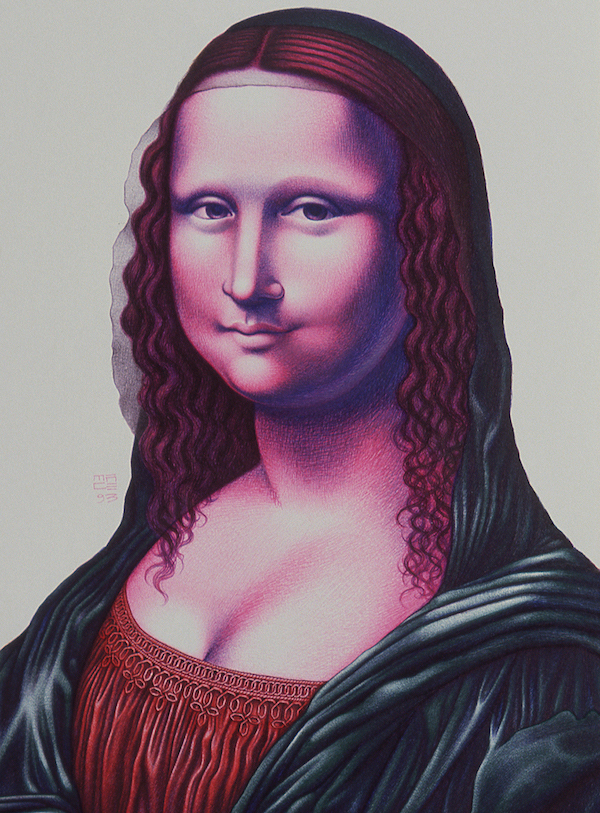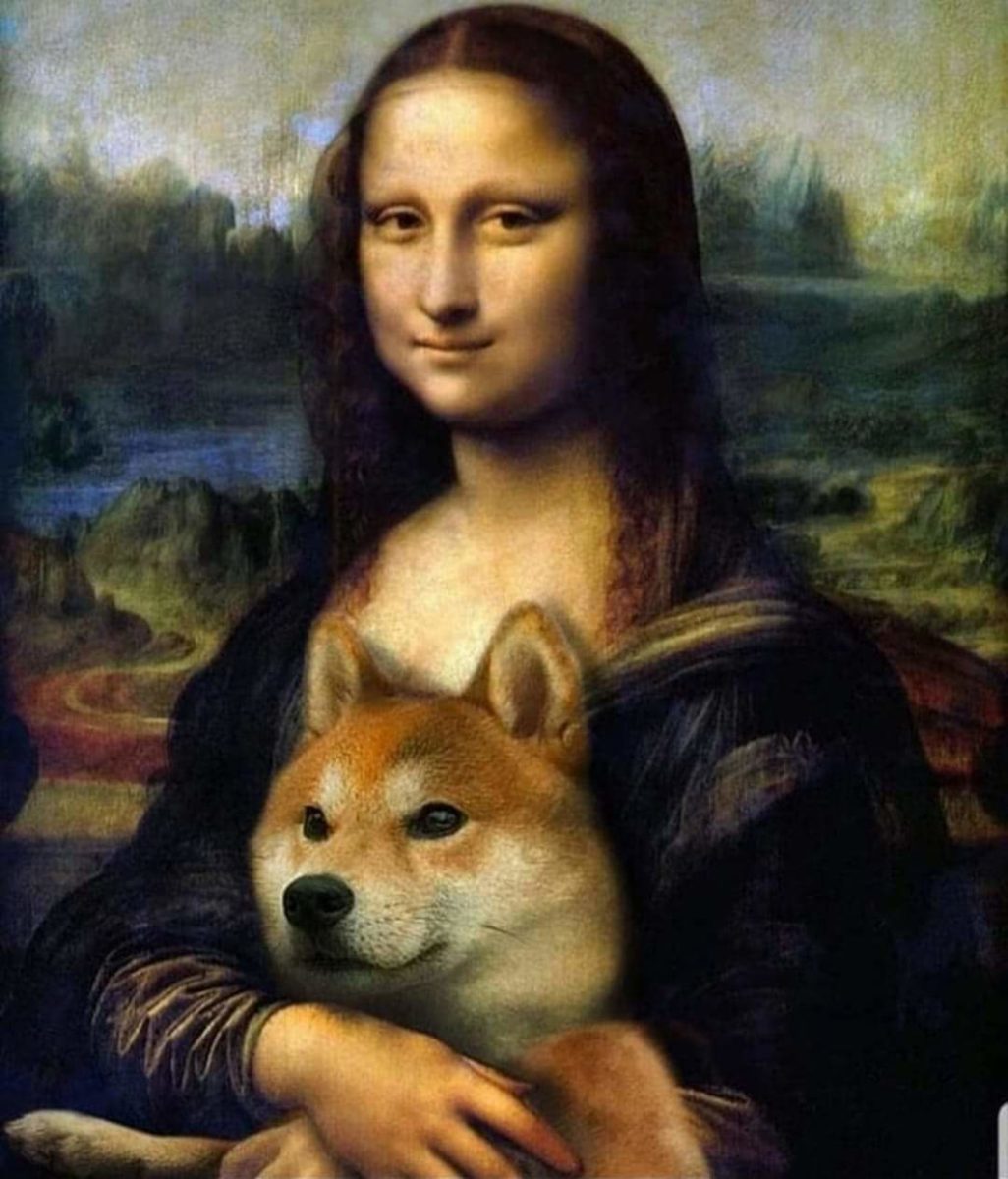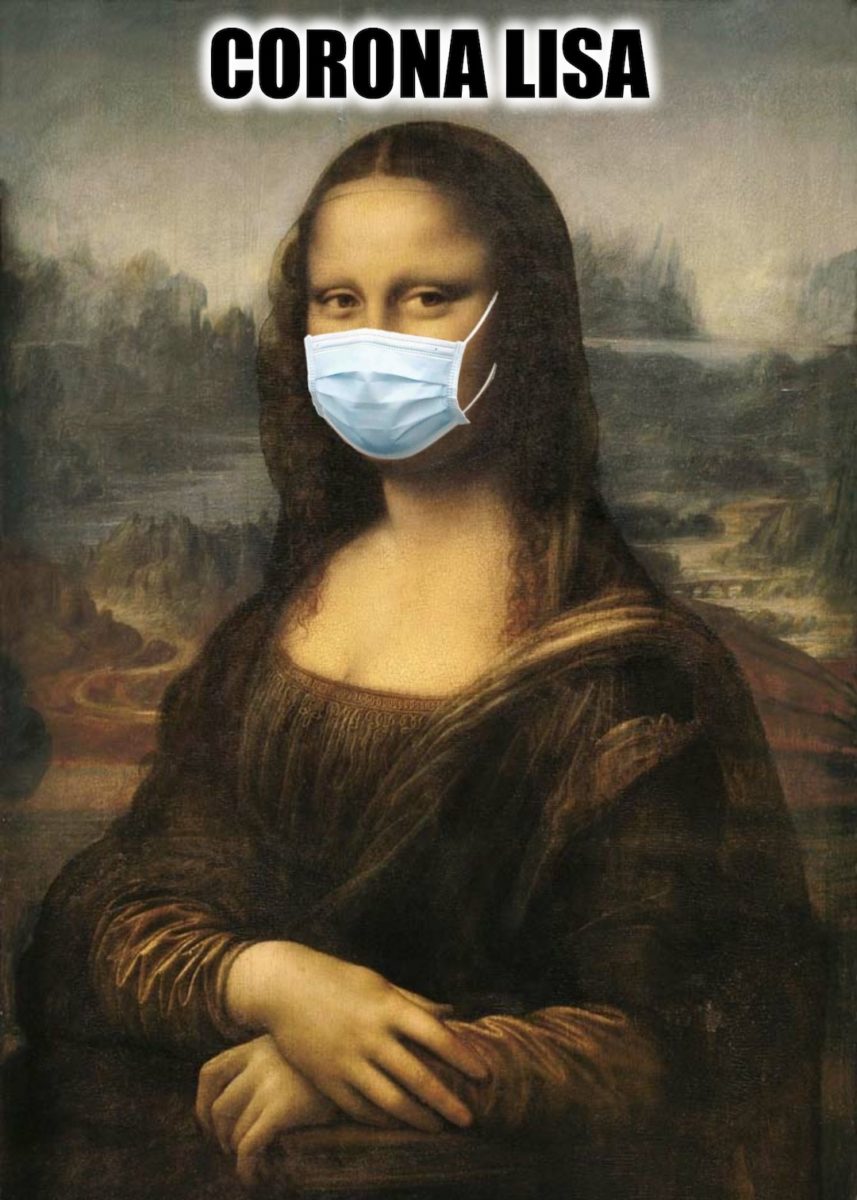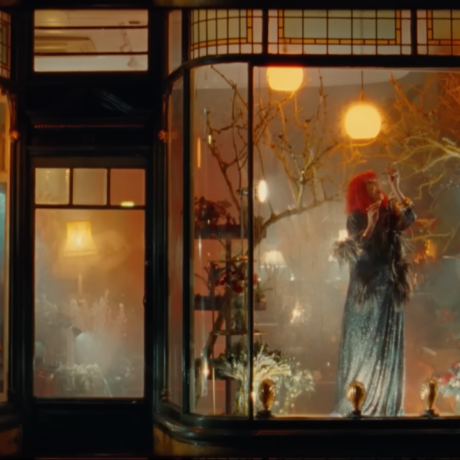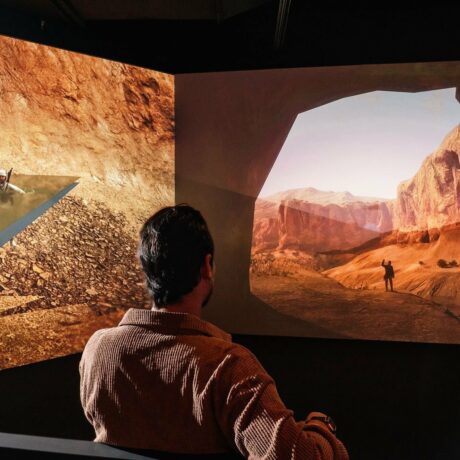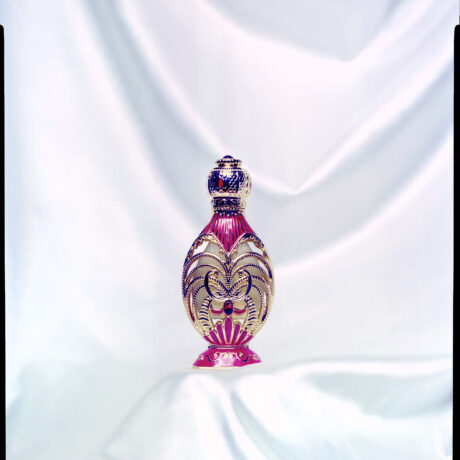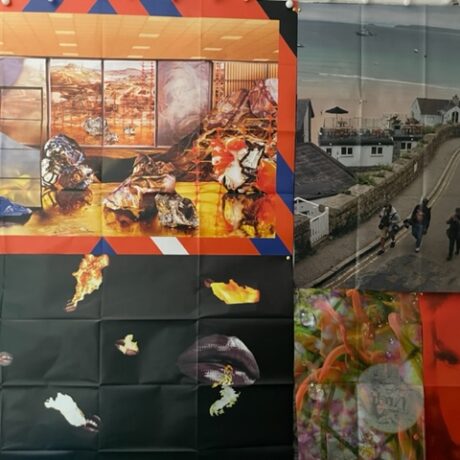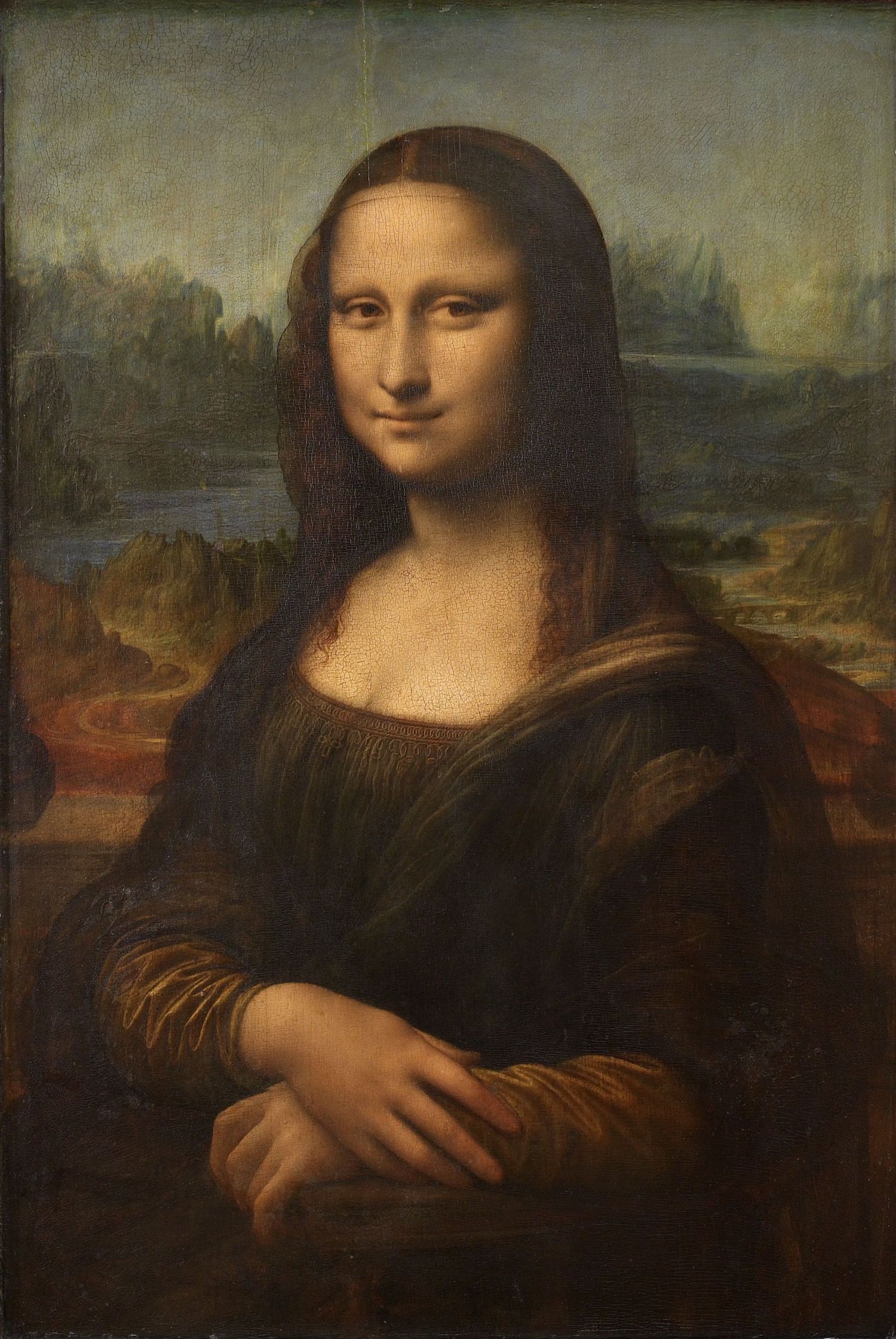
The Mona Lisa is now a healthy five centuries old. Painted by Leonardo da Vinci in 1503, it’s been sat in a special, temperature-controlled, bulletproof box in the Louvre since 2005. Though it’s begun to crack a little due to age and the weight of thousands of eyes daily, it’s remained one of the most famous paintings in the world.
The work has been in favour with the art world for centuries, but when the painting was stolen from the Louvre in 1911 it caused a media frenzy, which reignited its popularity for a new audience. Not long after, French heritage law stated the painting could never be bought or sold. While the painting did travel to other galleries after it was recovered two years later, the last time it travelled was in 1974, when a spirited woman tried to spray-paint it red while it was on show at Tokyo’s National Museum.
“Thanks to meme culture, we’re more saturated with parodies of the famous face than ever”
Whether it’s her knowing but illusive smile, the painting techniques of Leonardo and his mythologized self, or the unknown identity of the sitter, Mona Lisa fever grips the world even today, as it sits tucked up safely in Paris. Last year, for instance, when the painting moved locations in the museum to a prime spot next to a collection of Rubens paintings, 30,000 people a day were expected to make a beeline for it. But even though the artwork is plagued by crowds and camera phones, the image of the Mona Lisa has permeated Western culture to such an extent that you don’t have to go far to see a version of it.
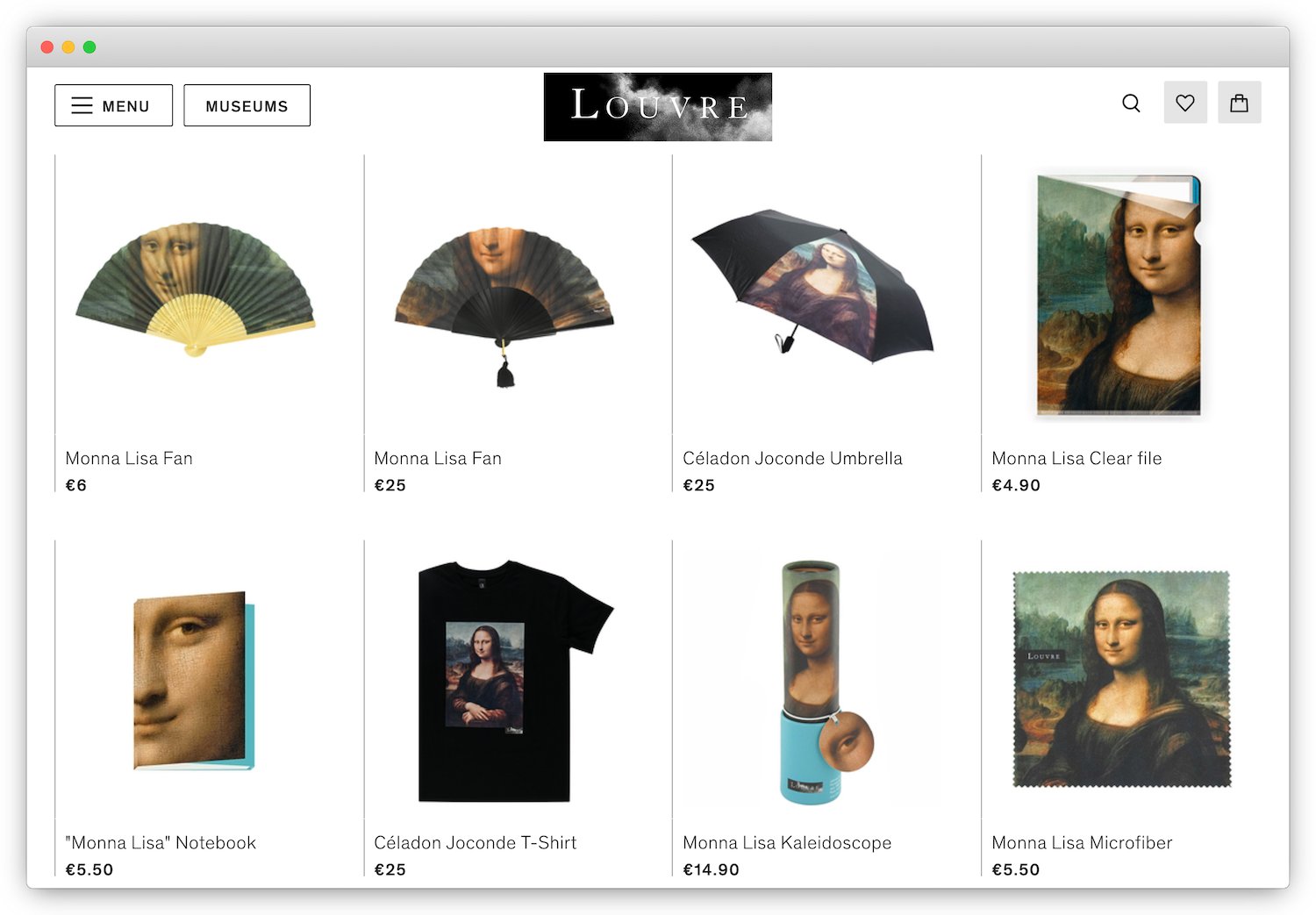
Due to its age, the Mona Lisa is in the public domain and is free to be copied, replicated and reproduced, which is why we see it on items like mugs and T-shirts. Before the merchandise though, there were reproductions of the Mona Lisa being painted even during Leonardo’s lifetime, mostly by his own students and contemporaries as a way to perfect their skills. Back then the painting was worthy of imitation as it was thought to be a perfect example of Renaissance art.
Fast forward to the twentieth century, and artists began reproducing the artwork again, but this time adapting it to match their own aesthetic. Marcel Duchamp’s L.H.O.O.Q from 1919, for instance, saw the artist tweak existing print reproductions of the painting by adding a goatee and twiddly moustache. The title is a pun, a seedy one at that, as the letters “L H O O Q” pronounced in French form the sentence “elle a chaud au cul”, colloquially translating into English as, “she has a hot ass”. Unlike the original, Duchamp’s version still falls under copyright law. But the image he created has become ingrained into our psyche, with moustache vandalism having become a classic TV trope.
Some years later Salvador Dalí got in on the moustachioed replicas with Self Portrait as Mona Lisa in 1954, which was created in collaboration with Philippe Halsman. The image merges a photograph of a wild-eyed Dalí and his trademark handlebar moustache in the same stoic pose, outfit and hair while clutching a handful of coins. Dalí went on to write an essay about the Leonardo artwork titled Why They Attack the Mona Lisa (1963), which featured his ruminations on why people have felt inclined to deface or steal the painting throughout history.
Another significant Mona Lisa iteration is Andy Warhol’s screenprint from 1963, though he went on to do several others. In 1962, the Mona Lisa painting had made its way across the Atlantic for the first time from Paris to New York, thanks to First Lady Jackie Kennedy persuading France’s culture minister to loan the painting to the US. The painting’s arrival was a worldwide media spectacle and was covered on TV, newspapers and magazines everywhere, so of course with Warhol’s interest in celebrity culture, it was the perfect subject.
The Mona Lisa was one of the earliest works Warhol used in his silk-screening printing process. In the original piece, it is duplicated four times, two different ways and it takes aim at artistic genius and authorship by reducing and diluting the image each time it’s copied.
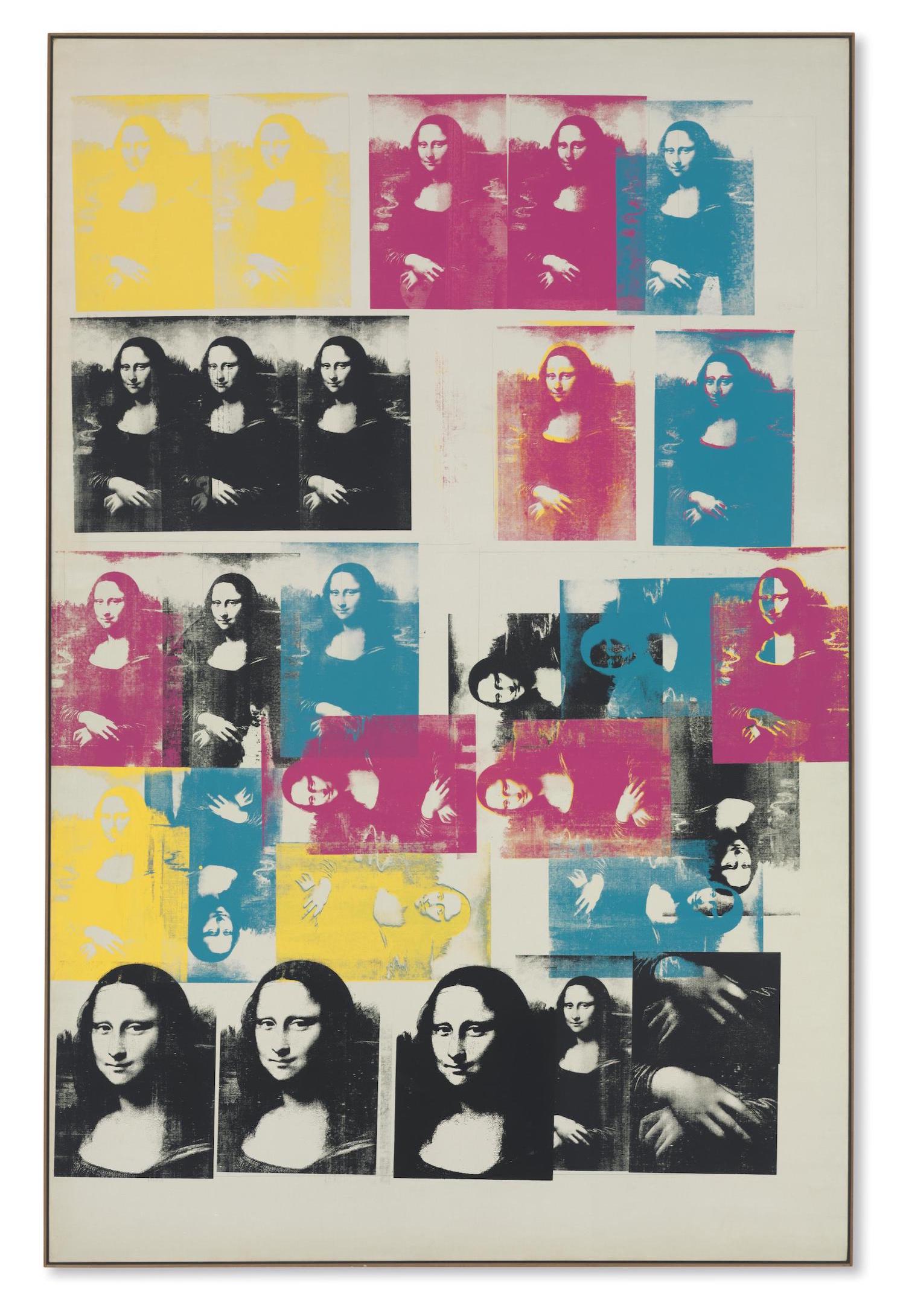
Warhol soon began experimenting further with the Mona Lisa, creating bigger grids as well as coloured versions, using the subtractive palette of cyan, magenta, yellow and black. Through these works, Warhol put the Mona Lisa on par with the celebrities of the day, and through his commodification of her face, he highlights our fandom and even alludes to potential over-saturation of the image.
“Most of these memes see the Mona Lisa reimagined as a contemporary figure”
Other artistic parodies include Fernand Leger’s Mona Lisa with Keys, from 1930, Fernando Botero’s extensive series of Mona Lisa parodies started in 1959, Robert Rauschenberg’s 1982 interpretation, Pneumonia Lisa, and Jean Michel Basquiat’s more surreal and distorted version from 1983.
More contemporary reproductions of the Mona Lisa have been Lennie Mace’s detailed biro depiction in 1993, French street artist Franck Slama’s Rubik’s Cube version, which reportedly sold for $521,000 earlier this year, and Sanghyuk Moon’s pixelated image, which aimed to illustrate that even when blurred the Mona Lisa can still be recognized.
- Lennie Mace, Mona a'la Mace ballpoint "PENting", 1993; Sanghyuk Moon, Mona Lisa poster
All of these iterations have helped perpetuate the idea that the Mona Lisa is one of the greatest paintings ever created, and while there’s still debate around that, it’s the shift from art world into pop culture that has kept it a mainstay for all these years. As well as the umpteen music, film and TV references to the painting, the plethora of Mona Lisa paraphernalia on offer has been a major contribution. The official Louvre shop alone offers nearly 20 different Mona Lisa themed objects including the classic T-shirt and notebook, but also an umbrella, a mug and oddly a lip balm, with just a close crop of Mona Lisa’s lips to decorate the tin.
The internet has also kept the Mona Lisa alive and well, and thanks to meme culture, we’re more saturated with parodies of the famous face than ever. Most of these memes see the Mona Lisa reimagined as a contemporary figure: she’s posing for a selfie with duck face; she’s cuddling a Shiba; she’s having a bad hair day; and in the age of corona, she’s now even donned a face mask.
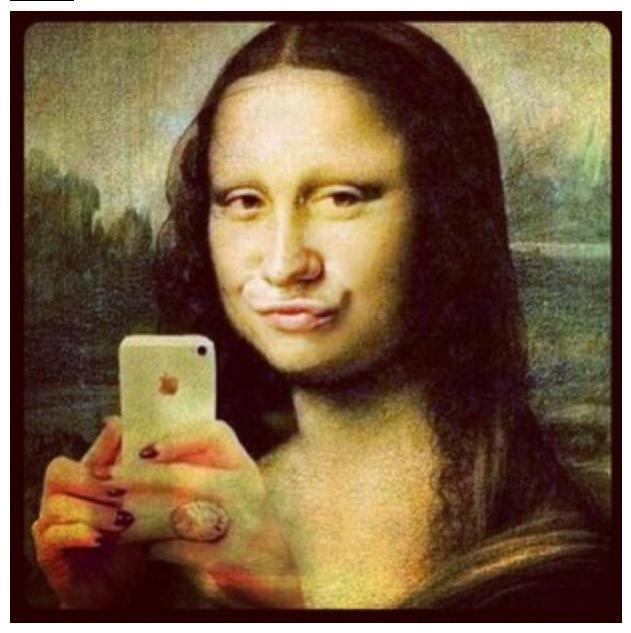
What these memes suggest is that our fascination with the Mona Lisa has gone so far that we now like to personify the painting, perhaps as a way of understanding the sitter herself. It’s thought Leonardo’s real-life model was Lisa del Gioconda, wife of a wealthy Florentine merchant, but we don’t really know who she actually was, what she liked doing, whether she was happy to model, or what she thought of the painting.
By making her into a meme we also make the Mona Lisa one of us. We enjoy it when celebrities are just like us, and who cares if she’s just an inanimate Renaissance painting, the fame and zeal she’s created is on a level with the instafamous stars of today.
- More Mona Lisa memes
Even huge stars like Beyonce and Jay-Z have acknowledged the power of the Mona Lisa, when the painting featured in their 2018 video for Apeshit. This saw the pair coolly take over an empty Louvre museum. Just 50 seconds into the video, the camera pans to Beyonce and Jay-Z in pastel-coloured power suits with the Mona Lisa between them on the wall.
Art historian Alexandra Thomas wrote at the time that positioning themselves in front of one of the world’s most famous pieces of art symbolized the pair making space for themselves in not only a white painting but a white-centric museum and art world. Here, the focus isn’t simply on replicating the painting, but instead offering an alternative to the original.
“Almost as Warhol predicted, the multiple replicas of the original have both built the piece up and diluted its presence”
Our appetite for the Mona Lisa has reached its peak, and while fandom around the artwork still remains, visually it feels as though we’re at capacity. Almost as Warhol predicted, the multiple replicas of the original have both built the piece up and diluted its presence. Many visitors often comment on the small scale of the original painting when they see it, and it’s because our fervour for this masterpiece has enlarged it to gargantuan proportions so much, that the real thing can now feel a bit underwhelming.
The Mona Lisa is ageing in its bulletproof box protected from the hysteria that still percolates around it, but maybe the hype around the painting is also ageing. It’s likely there will never be another painting so talked about, written about or merchandized. But, while it can be fun to discuss how that’s happened, to me, what Beyonce’s Apeshit video suggests is a need for other artworks to be celebrated, or at the very least, highlights a need for us to stop mythologizing the white artists of yesteryear.
